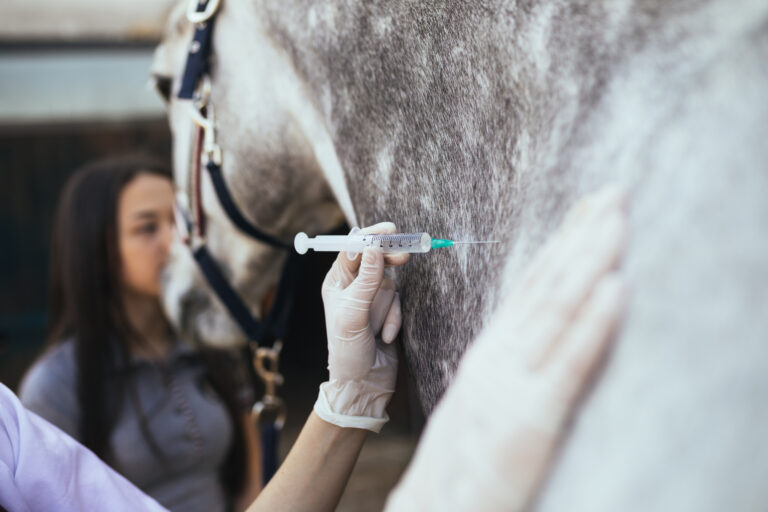
Over the last decade, veterinarians have consistently cited emergency duty as a top factor in leaving equine practice. The American Association of Equine Practitioners Commission on Equine Veterinary Sustainability’s Emergency Subcommittee identified numerous ways practices are alleviating this burden. Among them is forming an emergency cooperative.
Concerns About Joining an Equine Emergency Cooperative
At the 2020 AAEP Convention, Racquel Lindroth, DVM, DABVP, and Amanda McCleery, DVM, led a Table Topic called “Answering the Call: Providing Equine Emergency Coverage through Cooperative Efforts.” During the presentation, they discussed the reasons practitioners are reluctant to work with their colleagues to cover regional emergencies, based on the results of a 2020 emergency coverage survey created by the AAEP Wellness Committee, which had more than 800 respondents. At that time, only 8% of respondents used a cooperative model for emergency coverage. Their reasons for not utilizing an emergency cooperative included:
- Not enough local practitioners to form a group.
- Loss of control over patient care/concern over the level of care or diagnostic skill provided by local colleagues.
- Treatment of other species would be required.
- Concern they would need to cover too large of a geographic region.
- Concern over loss of clients to other practices.
- Concern over loss of needed revenue.
- Concern about other practices’ fees being too high or too low.
- Fear their clients would be disappointed or angry.
McCleery gave another presentation at the 2021 AAEP Convention titled “Better Together: Utilizing an Emergency Cooperative to Prevent Burnout,” which outlined the steps she and her colleagues used to form and successfully launch their emergency cooperative. Since then, many other cooperatives have been successfully formed around the country.
10 Steps for Starting an Equine Emergency Cooperative
While each group might be organized differently, these 10 steps can help a new cooperative get off the ground successfully:
- Identify other practitioners interested in lowering their on-call responsibilities, preferably within a 50-mile travel range of all participants.
- Decide on the parameters of the cooperative’s coverage. Will it only include weekends, or will it operate seven days a week? What about holidays? If one participant does all large animals, will the co-op only do the equine calls, or will the large animal doctor be available on the phone for consultation?
- Decide how far in advance to make the rotating schedule. Will you do this quarterly or annually? Also decide where the schedule will live, such as on Google Sheets or Google Drive. These platforms allow multiple people to access and edit the schedule as needed.
- Create group norms to guide members’ behaviors and expectations, including but not limited to the time range within which medical records will be forwarded to the patient’s primary doctor and the policy for seeing nonclients of participating practices.
- Agree on payment policies. The recommendation is typically for all payment or billing to be the attending veterinarian’s responsibility. The attending veterinarian should collect payment at the time of service and charge the client based on their own fee structure.
- Commit to monthly meetings to share a meal, troubleshoot, problem solve, network, and vent about veterinary life. This can also be a more formal journal club or case study meeting.
- Thoroughly discuss each cooperative member’s concerns or hesitations about loss of control of patient care, treatment of other species, covering too large a geographic region, loss of clients to other practices, loss of needed revenue, comparison to other practices’ fees, and fear that clients will be unhappy. These discussions are necessary to understand each other better and brainstorm solutions.
- Meet concerns about client retention head on. Clients sometimes prefer another veterinarian’s style and will want to switch practices. Practice honest and open communication to prevent or address the inevitable hard feelings this situation creates. The group will fail if this is not addressed. The benefits of having a break from emergency responsibilities can often assuage an otherwise painful situation, especially if you value your relationship with colleagues more than gaining a new account.
- Manage client expectations. Don’t surprise or confuse them. This requires forming clear rules with the cooperative members before informing clients so you can answer questions accurately.
- Market the emergency cooperative to all the practices’ clients with a clear demonstration of your collegiality and team mindset. Consider a group seminar for clients to meet all the veterinarians, business cards with all the members’ names, and even an emergency group moniker.
Final Thoughts
According to McCleery, “There are going to be trade-offs, because every group is going to be different and each member is going to have different priorities. Sit down and discuss what things are ‘deal breakers’ for you and where you are willing to bend. If you are invested in your group, it can be so much more than just a placeholder for you so you can get some much-needed time off. A cooperative can go a long way toward making this rewarding career more sustainable. You can more easily take maternity leave, deal with family emergencies, have a sick day, deal with school closures, and travel. After having a child, I likely would have left equine practice without the co-op, but instead my practice has continued to grow. The trade-offs of occasional increased drive time, regularly trusting your best clients with your colleagues, and working on nonequine species can lead to greater freedom, more personal time, and stronger relationships with colleagues.”
Related Reading
- The Business of Practice: Emergency-Only Practice Model
- AAEP Commission on Veterinary Sustainability: New Frontiers in Emergency Service
- New Ways to Approach Emergency Coverage
Stay in the know! Sign up for EquiManagement’s FREE weekly newsletters to get the latest equine research, disease alerts, and vet practice updates delivered straight to your inbox.

![[Aggregator] Downloaded image for imported item #18860](https://s3.amazonaws.com/wp-s3-equimanagement.com/wp-content/uploads/2025/11/14110036/EDCC-Unbranded-27-scaled-1-768x512.jpeg)
![[Aggregator] Downloaded image for imported item #18379](https://s3.amazonaws.com/wp-s3-equimanagement.com/wp-content/uploads/2025/09/30140703/EDCC-Unbranded-15-scaled-1-768x511.jpeg)

